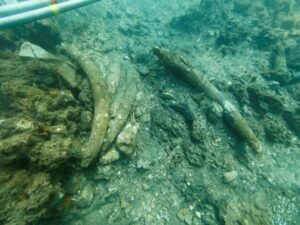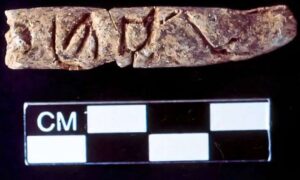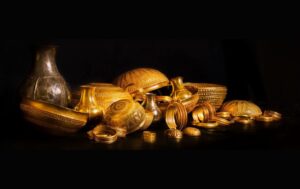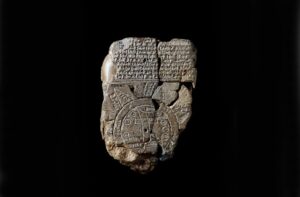In 1953, two CalTech astrophysicists with a side passion for archaeology drove a
battered Jeep across the northern Arizona desert to the top of White Mesa, a historic Pueblo settlement now located in the Navajo Nation. White Mesa sits like a slab of Australia that someone dropped by accident into the American Southwest. Tourists rarely climb the plateau itself, which was last inhabited around the 11th century. Instead, they make the less hazardous pilgrimage to White Mesa Arch, a teacup-handle jut of rock on the side of the mesa that makes for spectacular photo shoots.
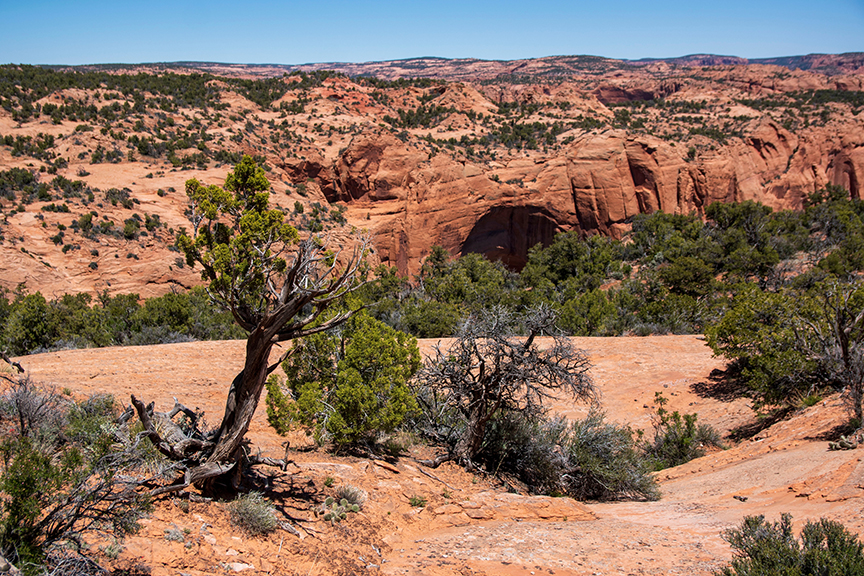
Navajo Nation land, northern Arizona. Photo: Shutterstock
But after pushing their exhausted vehicle up the flaky terrain to the top of the plateau, Bill Miller and Helmut Abt discovered an un-excavated trove of late medieval Pueblo artifacts. Over three weeks of trudging from dig site to Jeep and back again, the two found hundreds of pictographs, petroglyphs, and clay fragments. Most were of archaeological interest, but with little to add to the existing body of knowledge on the late medieval Pueblo.
Mystery object next to a crescent moon
Save one. Miller and Abt, who had not expected their profession to come calling, stared in wonder. Painted on the rock at the back of a deep cave, the pictograph depicted a circle abutting a crescent. The crescent, agreed the two astronomers, clearly represented the new moon. The object next to it must have been something very large or bright in the sky. But what was it?

The petroglyph in Binne Etenni Canyon, near the present-day Glen Canyon Dam, shows a crescent moon carved above a circle of roughly the same size. Photo: Helmut Abt and Bill Miller
Fascinated, he and Abt set out again one year later, this time with a grant from the
Museum of Northern Arizona and a guide from the Navajo Nation. He and Abt found a second example of astronomical rock art in Binne Etteni Canyon about 16km north of White Mesa. The photo Miller took shows another large circle next to a crescent, each carved into the stone itself.
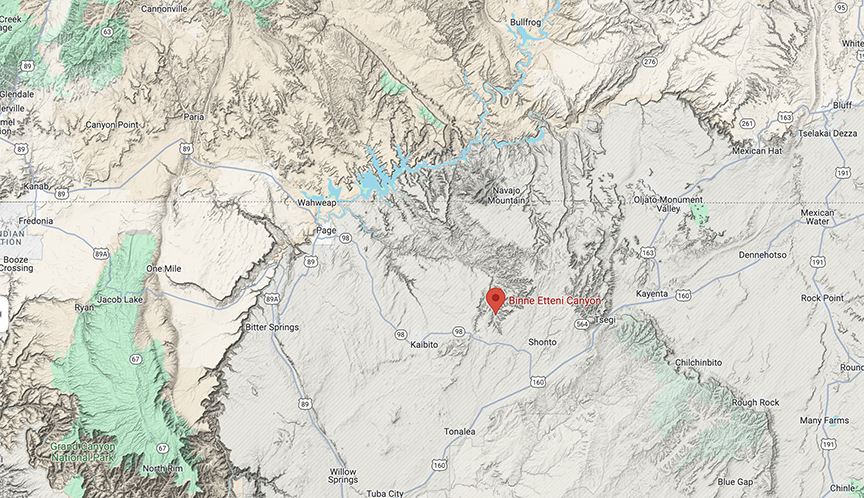
Photo: Google Maps
What had the medieval Pueblo seen in the sky that moved them to paint and carve images of it in the stones? Miller thought he knew: a supernova. When massive stars run out of fuel, their outer layers collapse under the force of their own gravity and rebound off the hard iron core, creating a sudden explosion of matter and light visible from galaxies away.
The supernova of 1054
The late Medieval period saw a striking concentration of nearby supernovas, but Miller had one candidate in particular. The supernova of 1054— known as SN 1054— was so bright that Chinese records describe it as being visible during the day for three weeks. Its remains became the Crab Nebula, an orange-green nest of matter clawing into empty space, and one of the most popular objects for amateur astronomy observations.
It’s easy to understand why Miller’s hypothesis was a powerful one. There’s an emotional appeal in the thought that 11th-century artists successfully communicated through the millennia that they witnessed the creation of a nebula we still marvel at today. His theory gained traction in the ensuing decades, as researchers identified dozens of similar astronomical petroglyphs and pictographs across the Southwest, in sites from California to Texas and Utah to Mexico.
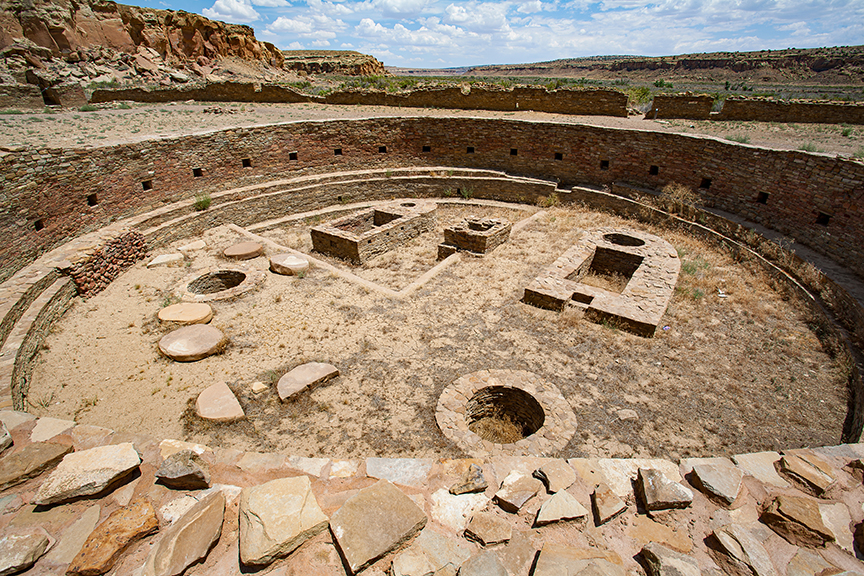
Part of the trove of Native American ruins at Chaco Canyon, New Mexico. Photo: Shutterstock
The most famous -– a pictograph at Chaco Canyon in New Mexico –- shows a hand, the moon, and a circular object bursting with rays. Today the supernova theory is widespread, enduring on placards at sites, on official tourism websites, and in college astronomy classes.
But do the so-called supernova renditions really depict SN 1054?
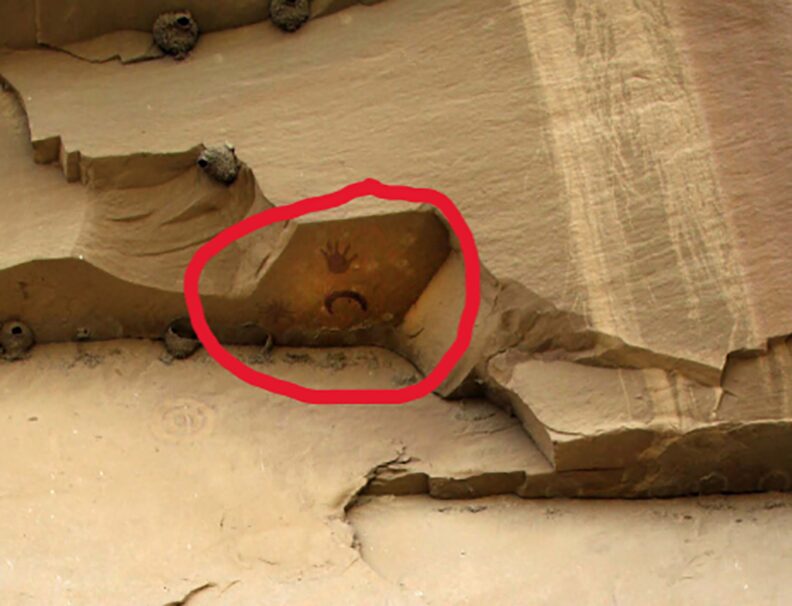
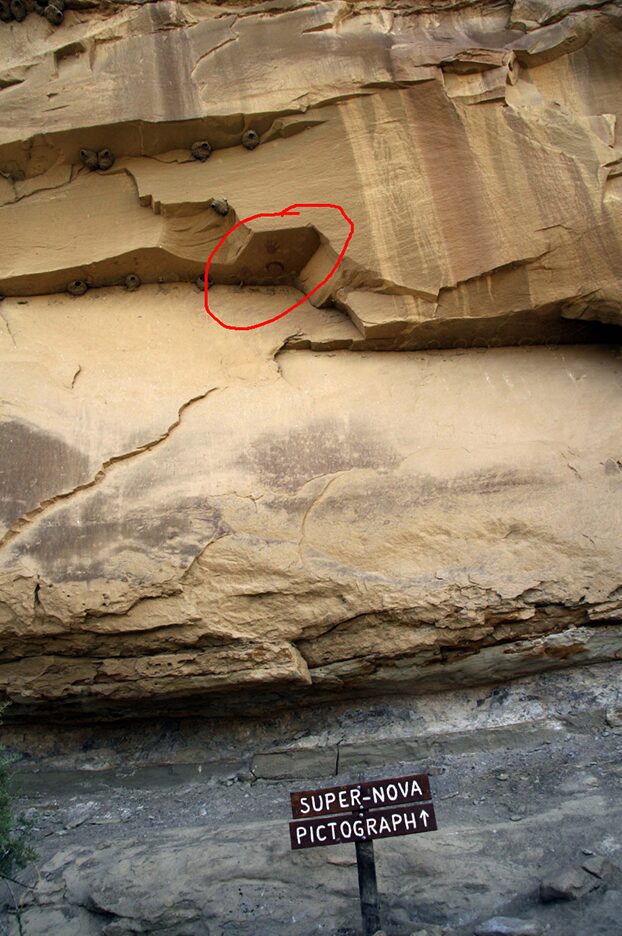
Top: detail of Chaco Canyon pictograph. The site features an overhanging rock with a pictograph of a handprint, a crescent, and a bright object emanating rays. Bottom: full view of wall, including signpost. Photos: E. C. Krupp
The supernova theory criticized
Even as Japanese and Abbasid records of SN 1054 came to light in the late 20th century, scholars in both astronomy and archaeology began doubting the idea that these pieces of rock art all represented SN 1054.
By the 2010s, just about every supernova rock art candidate had been considered and dismissed, some multiple times, for many different reasons. The supernova would not have been visible from the location of Miller’s original White Mesa pictograph, for instance. Also, his photograph of the Binne Etteni petroglyph was cropped to exclude two circles that didn’t fit with the supernova explanation. Carbon dating at many other sites doesn’t align with the year of the explosion.
These rational rebuttals leave a substantial hole in American archaeoastronomy. Though some scholars of the Pueblo have argued that the Chaco Canyon pictograph is more likely to be Venus or a sun shrine than SN 1054, most astronomical rock art pieces-– if stripped of their supernova status -– don’t enjoy alternative theories that might help us meaningfully recast them in ways that speak to contemporary audiences. It can seem that disbelieving the supernova theory means letting go of a throughline to humans who lived a thousand years ago.
But just because modern viewers don’t know exactly what a piece of astronomical rock art represents doesn’t mean it loses its relevance for the skies above us today. Whether the pictograph at Chaco Canyon is SN 1054 or Venus or a Sun shrine, it depicts something that is still part of our world, as do all the other illustrations. These petroglyphs show that the world around us was, to people a thousand years ago, worth carving into stone.

